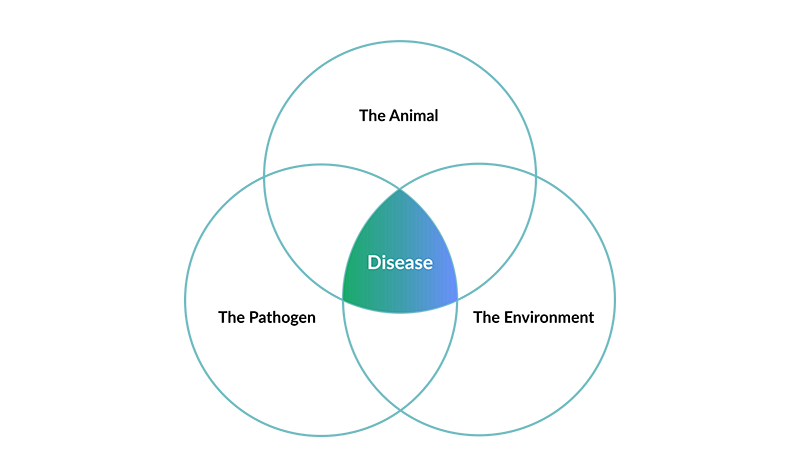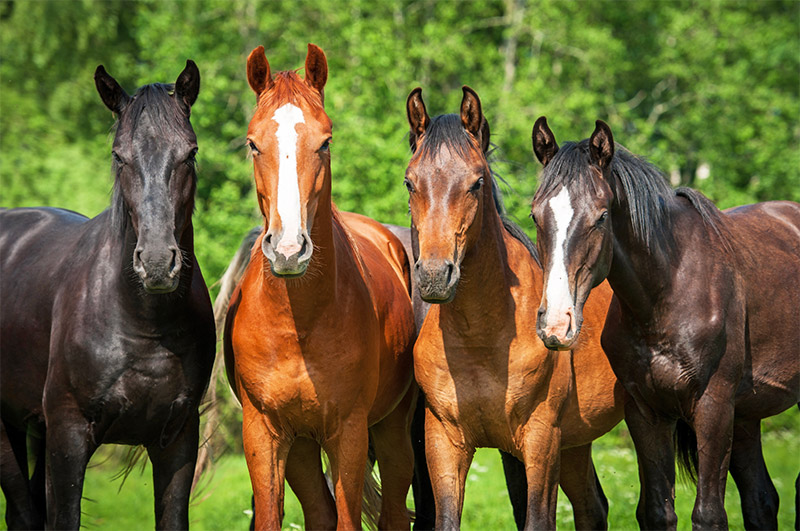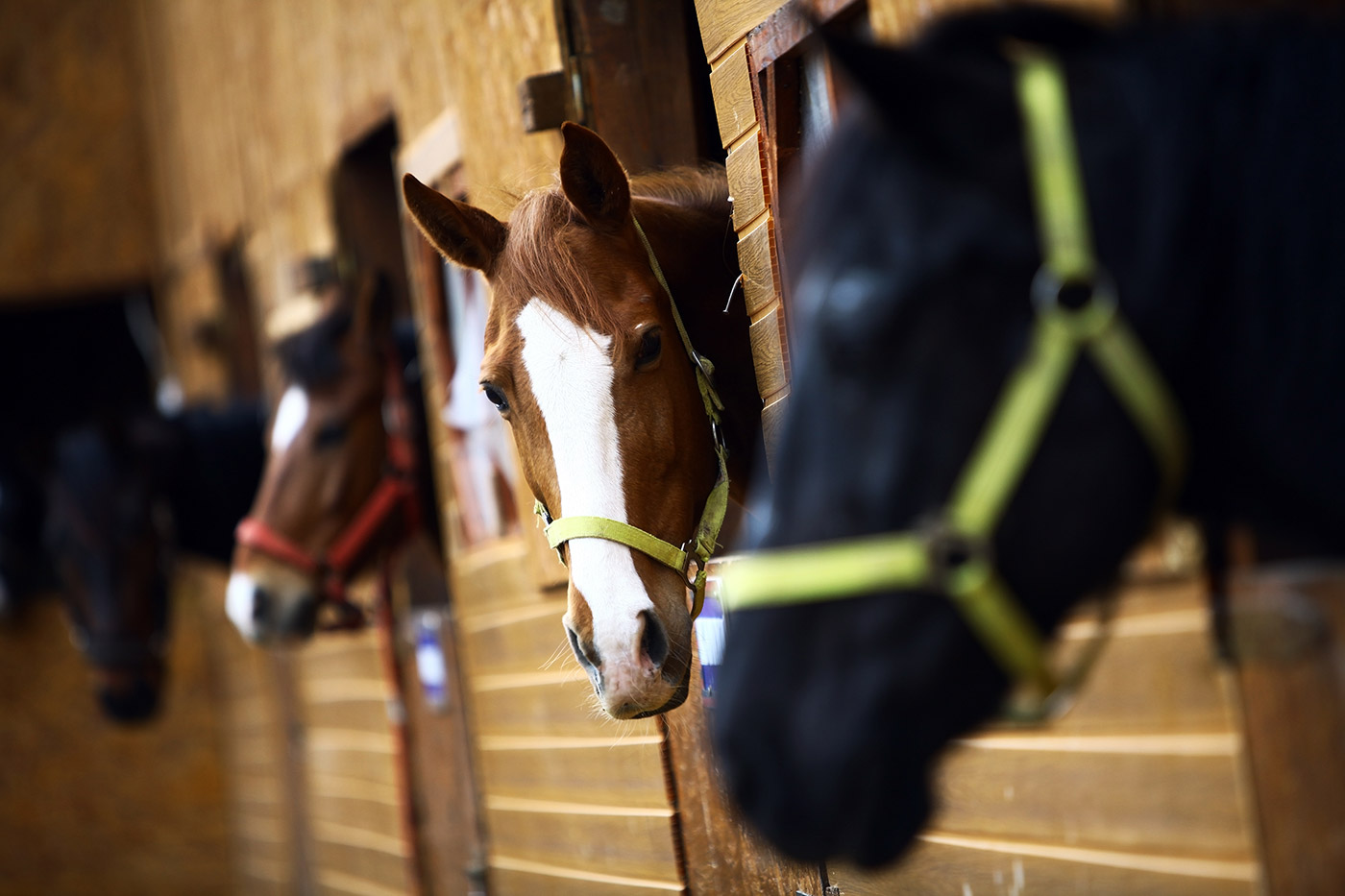Section 3 | Biosecurity and Health Management on Ontario Equine Premises
Industry
Page 13 /
How Disease Develops
How Disease Occurs
For disease to develop, there are a few factors at play: the animal itself, the pathogen, and the environment.
The Animal: Horses with well-developed immune systems, good nutrition status, vaccine status, and that are not experiencing stress (illness/injury/transport to a new facility or event, etc.) are better prepared to defend themselves against any invading pathogens.
The Pathogen: Some pathogens are better able to cause disease (more virulent) than others. Certain pathogens are also better able to survive in the environment. How prevalent pathogens are can also impact their ability to cause disease (for example, are there several animals coughing/sneezing in the barn? Is there manure present harbouring fecal bacteria?).
The Environment: A number of environmental factors play a role in disease development. The environment can either help or hinder the ability of pathogens to survive — is the environment clean and free of manure, rodents, insects? Is the barn well-ventilated and appropriately stocked? If pathogen and environmental factors overwhelm an animal’s ability to defend itself, disease can develop.
Sources of Disease and How it is Transmitted
Pathogens can be spread by direct and/or indirect transmission.
Direct Transmission
Direct transmission refers to direct physical contact between horses. Contact with bodily fluids or tissues of an infected animal can be sufficient to cause disease, depending on the pathogen.
These sources of infection include:
- Blood
- Saliva
- Mucus/nasal discharge
- Urine
- Manure
- Milk
Reducing nose-to-nose contact between stalls and over fences is an important consideration to reducing disease transmission through direct physical contact
Indirect Transmission
Indirect transmission of disease occurs when an inanimate object or intermediate host (i.e. an insect, rodent, cat/dog, wildlife) come into contact with a susceptible host. Pathogens that are transmitted through indirect contact are typically able to survive in the environment for long periods and can cause infection unless biosecurity measures are in place to reduce an animal’s exposure.
Some examples of indirect transmission include1:
- Indirect contact, or contact with infected equipment or clothing
- Ingestion, where pathogens are consumed when an animal ingests infected manure, urine, saliva, or nasal discharge
- Airborne droplets, where animals inhale air contaminated with pathogens as a result of herdmates releasing respiratory pathogens by:
- Sneezing
- Coughing
- Snorting
- Whinnying
- Airborne pathogens, where a pathogen is disturbed and deposited into the air where it can travel long distances
- Vectors, such as:
- Humans
- Insects
- Ticks
- Flies
- Mosquitos
- Rodents
- Farm dogs and cats
- Wildlife
Indirect transmission of pathogens is an important source of spread and contamination of the environment. This type of transmission allows for the spread of pathogens off the premises to other facilities through animal and human movement.
REMEMBER: Animals that are infected with a pathogen but are not yet showing signs of disease, or animals that have recently recovered from a disease but have not rid themselves of all the offending pathogen are sources of infection. Monitor horse health daily and isolate or quarantine an animal if it is showing any signs of disease.
Work with your veterinarian to develop SOPs for animal quarantine to reduce the spread of disease to herdmates
References:
- Government of Canada. 2016. National Farm and Facility Level Biosecurity Standard for the Equine Sector. https://www.inspection.gc.ca/animal-health/terrestrial-animals/biosecurity/standards-and-principles/equine-sector/eng/1460662612042/1460662650577


